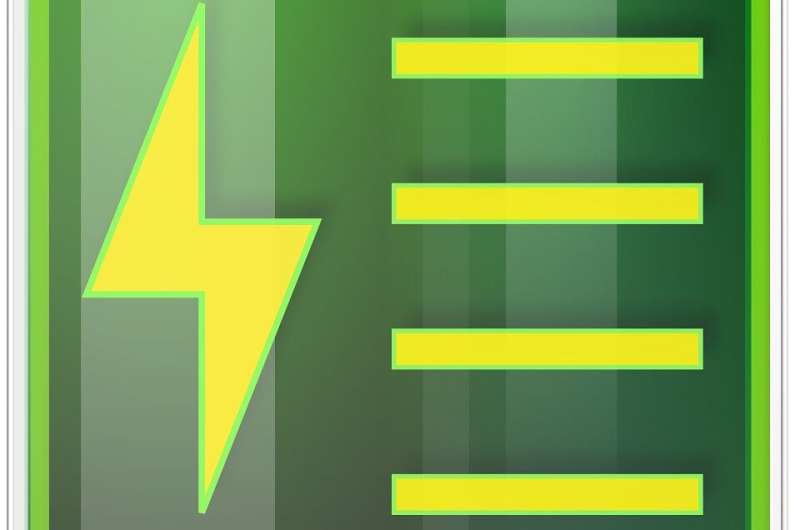
Researchers led by Jennifer L. Schaefer, professor in the Department of Chemical and Biomolecular Engineering at the University of Notre Dame, analyzed how magnesium-ion-conducting solid polymer electrolytes may work in two separate battery systems. They published their findings on Sept. 15 in Energy Material Advances.
“Energy storage devices need to be improved for further electrification of transportation and energy storage systems for renewable energy sources,” Schaefer said. “To meet these demands, beyond-lithium-ion battery systems have gained attention. Among the beyond-lithium-ion battery systems, rechargeable magnesium metal batteries are an attractive system due to the abundance of magnesium and the high volumetric capacity of magnesium metal anodes.”
Ion batteries comprise two electrodes, a negative called an anode and a positive called a cathode, with an electrolyte, typically a salt dissolved in a liquid or dissipated across a gel, connecting the two. When charge is applied to an electrode, an electrochemical reaction occurs that splits molecules into basic components. These components, typically atomic ions and electrons, separately travel to the opposite electrode to recombine in a way that either discharges energy to a connected devices or draws in energy from a power source.
According to Schaefer, magnesium metal batteries with non-liquid electrolytes have been understudied, as they suffer from serious ion transport and/or interfacial chemistry issues. Magnesium metal batteries with liquid electrolytes offer promise, Schaefer said, yet they suffer from the same issues as lithium-ion batteries—volatility, flammability, and possible leakage—plus corrosivity and/or reversibility issues.
“Solid polymer electrolytes are potentially advantageous due to higher thermal, mechanical and electrochemical stability compared with liquid electrolytes as well as lower cost and density relative to inorganic solid-state electrolytes,” Schaefer said. “While lithium ion-conducting solid polymer electrolytes have been widely researched, reports on successful magnesium ion-conducting versions are relatively limited.”
As such, understanding of how ions react and transport through the system is also limited, Schaefer said. Her team analyzed how magnesium polymer electrolytes made of a magnesium-based salt in polymer, known as PCL-PTMC, compared to the common polyether electrolyte. Both electrolytes were studied in contact with magnesium metal anodes. The ion speciation of each were examined via spectroscopy techniques, revealing that magnesium ions in the PCL-PTMC exist as ion complexes, bonded to other ions instead of as free magnesium ions.
“As previously reported with lithium salts, the interaction between positively charged ions and the polymer chain in PCL-PTMC was weaker than for the other polymer,” Schaefer said, noting that weaker interactions can improve conduction of the positively charged ions. “However, polarization of cells containing the magnesium PCL-PTMC electrolyte resulted in highly dispersed, particle-like deposits.”
Schaefer hypothesized that the magnesium complexes identified via spectroscopy decomposed on the electrodes after they were involved in conduction, which inhibited the electrodes from further interactions. Next, her team plans to explore other salts, as well as other electrolyte interfaces, to protect the magnesium electrode from undesirable chemical deposits.
“Our future work will focus on methods to overcome the interface issues and to quantify the magnesium conduction,” Schaefer said.
New material could pave way for better, safer batteries
Bumjun Park et al, Ion Coordination and Transport in Magnesium Polymer Electrolytes Based on Polyester-co-Polycarbonate, Energy Material Advances (2021). DOI: 10.34133/2021/9895403
Provided by
Beijing Institute of Technology Press
Citation:
Powering up next-generation energy storage with beyond-lithium-ion battery systems (2021, November 17)
retrieved 17 November 2021
from https://techxplore.com/news/2021-11-powering-next-generation-energy-storage-beyond-lithium-ion.html
This document is subject to copyright. Apart from any fair dealing for the purpose of private study or research, no
part may be reproduced without the written permission. The content is provided for information purposes only.
Stay connected with us on social media platform for instant update click here to join our Twitter, & Facebook
We are now on Telegram. Click here to join our channel (@TechiUpdate) and stay updated with the latest Technology headlines.
For all the latest Technology News Click Here
For the latest news and updates, follow us on Google News.
